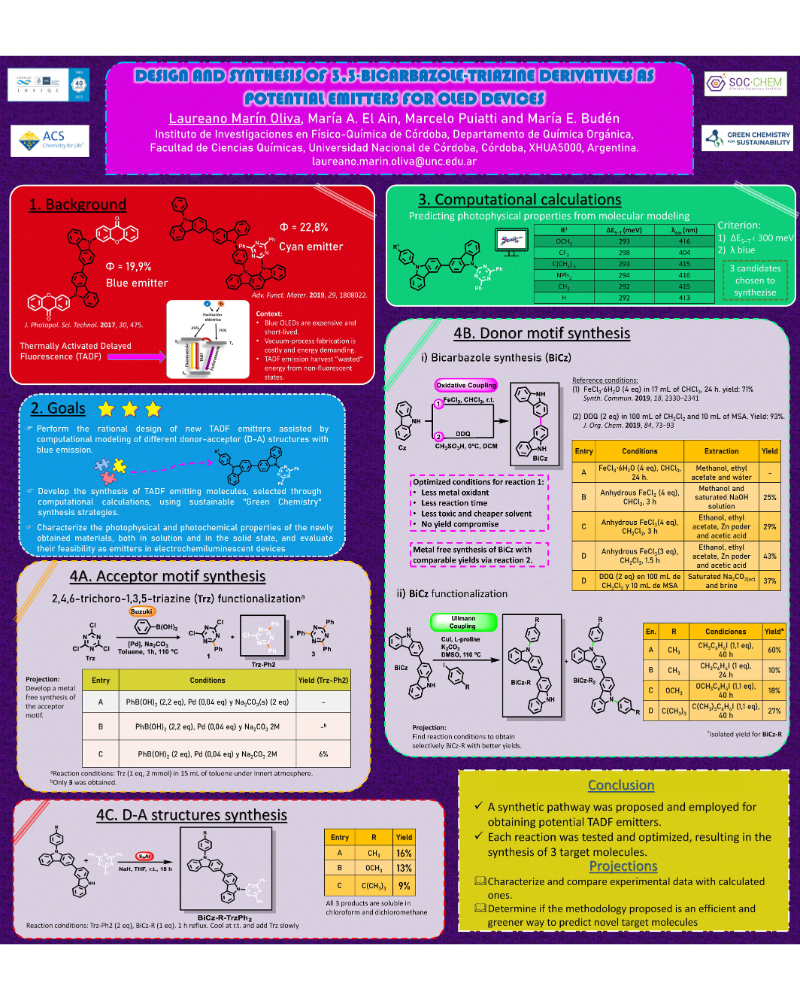
The efficient design and synthesis of emitters for organic light-emitting diodes (OLEDs) is a critical area of research, driven by the demand for cost-effective, sustainable, and high-performance blue emitters. This study presents the design and synthesis of 3,3’-bicarbazole-triazine derivatives as potential thermally activated delayed fluorescence (TADF) emitters. Using computational modeling, donor-acceptor (D-A) structures were rationally designed to exhibit blue emission and low singlet-triplet energy gaps.
The synthesis of TADF emitters was achieved via optimized and greener synthetic pathways, minimizing the use of toxic reagents and solvents while reducing reaction times and metal oxidant consumption. A key focus was on the functionalization of bicarbazole (BiCz) and triazine (Trz) motifs, with yields of up to 43% for the donor motifs and 6% for the acceptor motifs under optimized conditions. As a projection, experimental characterization of photophysical properties will be done, including emission wavelengths and quantum yields, to validate the computational predictions. Thus, demonstrating if there is an agreement between calculated and observed properties.
Future work aims to develop metal-free synthetic routes for both BiCz and Trz motifs and to optimize reaction conditions for improved yields. This study exemplifies the application of green chemistry principles in advanced material synthesis and highlights the potential of TADF technology for sustainable OLED fabrication.